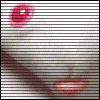|
Collateral Damage posted:If your bike has an OBD plug (or some other CAN bus access) there are a few CAN/OBD shields which will let you get a lot of that data straight from the engine controller. If the latter ends up being the case, probably the best way to proceed is by picking a protocol (I2C, TWI, SPI, etc) and buying your sensors based on that, as opposed to some goddamn hellscape of different communication methods and ADCs for analog stuff and oh god. ...not that I ever made that mistake before or anything.
|
|
|
|

|
| # ? May 28, 2024 12:53 |
|
Sh4 posted:Anyone interested about working together on a motorbike computer project, was thinking about functions like speedo, mileage, fuel level, oil warning, water temp, maybe RPM too but I have no idea how to proceed. I'm interested in working on something like that. As a motorcyclist myself I am also frustrated by the lovely offerings for aftermarket gauges. There's a some useful modules out there already: https://www.tindie.com/products/TheRengineer/analog-gauge-stepper-breakout-board/ A cluster with an analogue dial that can change measurements according to preference would be cool, maybe with OLED like that keyboard that can change it's keys. Like I want the main dial to be RPM and the speed to be on the digital display, or the speed to be the dial with the RPM on the digital display, or I have an electric bike and I want the dial to be the battery / efficiency measurement. It's the kind of thing that you could never put on a bike OEM because of regulations.
|
|
|
|
ReelBigLizard posted:I'm interested in working on something like that. As a motorcyclist myself I am also frustrated by the lovely offerings for aftermarket gauges. There's a some useful modules out there already: That would be cool but I think that would be hell to make it weatherproof, I was thinking of a single screen oled or digital whatever is better
|
|
|
|
ReelBigLizard posted:I'm interested in working on something like that. As a motorcyclist myself I am also frustrated by the lovely offerings for aftermarket gauges. There's a some useful modules out there already: I had dreams when younger to replace my car dash with a touch screen that was reconfigurable like the Consoles on Star Trek the Next Degradation. Now i am bitter, twisted and writing code for pokemon on minecraft....
|
|
|
|
Sh4 posted:That would be cool but I think that would be hell to make it weatherproof, I was thinking of a single screen oled or digital whatever is better Trailtech have got that market pretty much cornered - http://www.trailtech.net/digital-gauges EDIT: besides, I've got some ideas for non OLED solutions now, and a novel idea for how to make the guage adapt. I might mock something up in html5 and see how it looks. ReelBigLizard fucked around with this message at 17:03 on Mar 27, 2015 |
|
|
|
TheresaJayne posted:I had dreams when younger to replace my car dash with a touch screen that was reconfigurable like the Consoles on Star Trek the Next Degradation. All you need for that on modern cars is a bluetooth OBDII reader and an Android tablet. Here's an Android tablet that's got a dash cam, GPS, radar detector, and a bunch of other stuff built in. http://www.dx.com/p/7-capacitive-screen-android-4-1-car-gps-navigator-table-pc-w-wifi-car-radar-detector-car-dvr-353416#.VRYozC7ZWXk
|
|
|
|
Where can you get one of those baseplates that hold an Arduino and a breadboard? Just the plastic piece alone (I guess it could include a breadboard if needed).
|
|
|
|
Anything arduino accessory related: search ebay, then filter by results shipping from the USA/North America. You pay a dollar or two more than having it shipped direct from China, but it arrives in 2-4 days, instead of 6-8 weeks. I ended up sanding down a nice pice of 1x5 board and screwing down the breadboard, etc. There's an arduino under two shields here, and in the bottom right are two mini bread boards screwed down to a second board.  I forget what those big bolt posts were for, probably an old Beaglebone Black or Intel Galileo. Hadlock fucked around with this message at 06:56 on Mar 30, 2015 |
|
|
|
Tackled my first Arduino project using some Chinese Digispark clones from eBay and turned them into a volume up/down/mute controller. Windows-compatible code came from Adafruit from one of their Trinket projects. The knob is just a 1" cutting of 2" aluminum round rod that I hot glued (repeatedly) to a nut and polished on my cordless drill. Base is some scraps of sapele covered in Danish oil that I quickly glued together to hold the chip and rotary encoder. All in about $8 of parts and an embarrassing amount of time trying to learn about Digisparks and uploads and Windows media key formats.
|
|
|
|
holy. loving. poo poo. Time to buy a dozen more of these. I have one but I don't have any 3.3V boards and re-flashing it looked tedious but oh hey now there's a thing with an Arduino IDE that's basically a halfassed (SPI and I2C aren't fully implemented) Arduino with wifi for four dollars. e: I mean now the problem will be that not enough of the pins are broken out on most of the eBay boards, but we're halfway there.
|
|
|
|
Props to squirrel-labs.net ( ) )Ordered thirty 5mm Neopixel clones from their ebay shop, got them in 2 days with free postage and they threw in three 8mm ones and a discount code for their regular site. Gave the 8mms to a coworker who gave me an Arduino pro mini clone for the gauge cluster idea. That is loving sweet.
|
|
|
|
SoundMonkey posted:e: I mean now the problem will be that not enough of the pins are broken out on most of the eBay boards, but we're halfway there. The ESP-12 is pretty good for getting lots of pins.
|
|
|
|
SoundMonkey posted:holy. loving. poo poo. I feel like a big dummyface, but just for clarification - can these actually be used by themselves to interface with stuff without requiring a separate microcontroller? Like, if I wanted to wirelessly monitor the water level in my coffee pot (for whatever reason people do this) all I'd need is one of these and the appropriate code and sensor?
|
|
|
|
Acid Reflux posted:I feel like a big dummyface, but just for clarification - can these actually be used by themselves to interface with stuff without requiring a separate microcontroller? Like, if I wanted to wirelessly monitor the water level in my coffee pot (for whatever reason people do this) all I'd need is one of these and the appropriate code and sensor? Yes, but be careful because there might not be a library to talk to your sensor. I think someone mentioned the board doesn't do SPI or I2C yet so that rules out a lot of things. I'm also not sure it has an ADC so you definitely need to do some homework first.
|
|
|
|
mod sassinator posted:Yes, but be careful because there might not be a library to talk to your sensor. I think someone mentioned the board doesn't do SPI or I2C yet so that rules out a lot of things. I'm also not sure it has an ADC so you definitely need to do some homework first. All good info, thanks.  I don't really have anything in mind yet that I'd need that kind of functionality for, but as I continue to fumble through some basic home automation prototype projects, I imagine something will pop up eventually. I don't really have anything in mind yet that I'd need that kind of functionality for, but as I continue to fumble through some basic home automation prototype projects, I imagine something will pop up eventually.
|
|
|
|
mod sassinator posted:Yes, but be careful because there might not be a library to talk to your sensor. I think someone mentioned the board doesn't do SPI or I2C yet so that rules out a lot of things. I'm also not sure it has an ADC so you definitely need to do some homework first. I just went and actually read the article for a change and apparently it's only I2C/SPI *slave* modes that aren't fully working yet. Also PWM is looking a bit challenging. edit: that DX board seems to imply this thing has one singular ADC, which luckily is all I need for most stuff. If SoftwareSerial works, this thing basically owns. SoundMonkey fucked around with this message at 00:12 on Apr 4, 2015 |
|
|
|
Any Arduino-heads in here who are handy with the C++ side of things? Hi, I'm trying to use this Telit GPRS library here: http://wiki.groundlab.cc/doku.php?id=gsm_arduino_library I'm having trouble getting it to compile with an Arduino Mega. I'm well versed in regular Arduino programming, but I'm very rusty on my C++, and so I don't really know where to start in debugging the issues, namely: code:code:Thanks...
|
|
|
|
|
What if you comment out that typedef that defines HardwareSerial as Serial? IIRC the Arduino libraries nowadays have a small type hiearchy with a base Serial type and concrete SoftwareSerial and HardwareSerial implementations. edit: Actually try replacing that typdef with this: code:mod sassinator fucked around with this message at 01:28 on Apr 9, 2015 |
|
|
Hmm, doesn't seem to. After changing that typedef as you suggested, I get this:code:
|
|
|
|
|
Okay—it compiles in the old Arduino 0023 IDE. Before they refactored basically everything. It would be a worthwhile project to try to update it for the modern environment, but in the interest of time I may have to just go back to 0023 for my project.  Anyone bored enough to want to work with me on that upgrade effort?
|
|
|
|
|
I ended up grabbing a few of those ESP-12 modules from eBay just for the hell of it. They are very small.
|
|
|
|
stupid question: I want to use the arduino ethernet library, for example, which because of the arduino shields, has a hard-coded SPI pin. what if I'm not using a shield and I wanted to change that pin for some reason? I figure I could: edit the pin number in the library OR edit the library to accept a pin argument as part of the setup Or, is there an easier way to do it, like a well placed #define or something?
|
|
|
|
OK, these little ESP8266 widgets are pretty awesome. I've only gone as far as blindly following this Instructable, but everything worked exactly as advertised. I still have no idea exactly what I'm going to do with them, but just seeing them in action - and realizing that I paid roughly $4 apiece for them - is just a little bit amazing. I got mine from a US-based seller, five units for $2.95/ea with $3.49 shipping. They don't come with the little breakout board, so keep in mind that the pins are spaced at 2mm rather than 2.54mm/0.1 inch and won't fit on a standard breadboard. I made my own breakout with some strip board and scraps of solid core Cat5 cable. I don't recommend my method...in hindsight, I probably could have designed and etched a board in less time than it took me to make that little monstrosity. gently caress it though, it worked!
|
|
|
|
Acid Reflux posted:They don't come with the little breakout board, so keep in mind that the pins are spaced at 2mm rather than 2.54mm/0.1 inch and won't fit on a standard breadboard. I made my own breakout with some strip board and scraps of solid core Cat5 cable. I don't recommend my method...in hindsight, I probably could have designed and etched a board in less time than it took me to make that little monstrosity. gently caress it though, it worked!
|
|
|
|
PRADA SLUT posted:Where can you get one of those baseplates that hold an Arduino and a breadboard? Just the plastic piece alone (I guess it could include a breadboard if needed). I got one from a sparkfun dumpster dive at one point or another. They sell them without breadboards for pretty cheap, but I'd guess it'd be hard to justify shipping one. https://www.sparkfun.com/products/11235
|
|
|
|
Three working ATMEGA 328P-PU chips, but two out of three UNO boards are fried. What the hell, Inland Micro? At least they're socketed, so I can use the one working board to program all three chips. Wish I could find my loving receipt. Can I just breadboard these after I program them and use them that way, or do they need the board to function?
|
|
|
|
ejstheman posted:Three working ATMEGA 328P-PU chips, but two out of three UNO boards are fried. What the hell, Inland Micro? If you don't have an external 16MHz crystal, you'll have to adjust some fuse settings to use another crystal or the internal oscillator, and you won't have serial, but otherwise they should be good to go for breadboarding.
|
|
|
|
poeticoddity posted:If you don't have an external 16MHz crystal, you'll have to adjust some fuse settings to use another crystal or the internal oscillator, and you won't have serial, but otherwise they should be good to go for breadboarding. How do you use the internal oscillator? A 16MHz crystal is cheap per each, but I assume not if I only need two of them, what with S&H.
|
|
|
|
Check out the bottom of this page for details: http://arduino.cc/en/Tutorial/ArduinoToBreadboard
|
|
|
|
poeticoddity posted:If you don't have an external 16MHz crystal, you'll have to adjust some fuse settings to use another crystal or the internal oscillator, and you won't have serial, but otherwise they should be good to go for breadboarding. Uh, I've built a contraption using 328P clocked with the internal oscillator (at 8MHz) and serial works just fine. I don't have the program at hand and I don't remember at which speed, but using a cheapo chinese FTDI board I can hook up to the UART and do stuff with it.
|
|
|
|
So I have a MIDI project that is running fine on an UNO but for space and cost reasons I would prefer to have it run on a Trinket 5v. The project uses 5 pins which is convenient (RX and 2-5 are just LED on/off to run a solid state relay) as this is the number of available pins on the Trinket to work with. What isn't so great is that the MIDI library auto initializes pin 1 for TX and it can't be used for anything else (I am only receiving MIDI data in this project,) this works fine when testing it with the UNO but won't fly if I put it on the trinket. So my question is how do I pair down the MIDI library so that it will run on the Trinket leaving me with all available pins and what I might have to change in my code from on the UNO version to function on a trinket. If I don't have to edit the library itself and instead just achieve this by way of just a change in my code that would be even better. Just for the sake of inclusion here is what I am running on the Arduino side, the project is set up so that it receives MIDI input from a drum machine and then utilizes that to run a solid state relay to control 4 sets of two electrical outlets. code:
|
|
|
|
If you are receiving data, you are also sending data, whether you tell it to or not. If you need more pins, then you should look into multiplexing. As for your code, it needs help. Your mass of if structures should be changed to a switch case and I'm not sure what you're doing with them: Why aren't you just stating 'socketOne= 1' and 'socketOne = 0', or the more proper 'socketOne = HIGH/LOW'. As a side note 's1 = s1 + sO' can just be writen 's1+=sO'. Thirdly, don't have digitalWrites every loop; only write when they change (this is something I bring up almost constantly and should probably be bolded in the OP). Stick them in the on/off state handlers. Like this: code:TheLastManStanding fucked around with this message at 20:00 on Apr 14, 2015 |
|
|
|
Amberskin posted:Uh, I've built a contraption using 328P clocked with the internal oscillator (at 8MHz) and serial works just fine. I don't have the program at hand and I don't remember at which speed, but using a cheapo chinese FTDI board I can hook up to the UART and do stuff with it. Interesting. Most of what I've read (caveat: largely snippets from electronics blog posts) has suggested that the variability in internal oscillators makes serial communication between chips without crystals relatively unreliable, but maybe that more an issues of extremes in opposite directions or something. 
|
|
|
|
TheLastManStanding posted:If you are receiving data, you are also sending data, whether you tell it to or not. If you need more pins, then you should look into multiplexing. Thank you.
|
|
|
|
ejstheman posted:A 16MHz crystal is cheap per each, but I assume not if I only need two of them, what with S&H. Where do you live? I have a whole shitload of 16MHz crystals on hand for Arduin-ish projects, and I'd be more than happy to throw a few in an envelope and send them along. I'm in the US, so postage to...well, basically anywhere...is going to be negligible, as long as you don't want them tomorrow. 
|
|
|
|
Acid Reflux posted:Where do you live? I have a whole shitload of 16MHz crystals on hand for Arduin-ish projects, and I'd be more than happy to throw a few in an envelope and send them along. I'm in the US, so postage to...well, basically anywhere...is going to be negligible, as long as you don't want them tomorrow. I got my hopes up that I could desolder the crystals from the broken boards and pop them in the breadboard, but it turns out the leads are too short. Womp womp. I recently got a super-great job, though, so I would feel bad accepting charity. I can buy some crystals. I need some power regulators and capacitors and whatnot too, and I'm thinking of getting one of those ICs with four Schmitt triggers in it because this debounce code I'm working on is really annoying. I can get a decent order together and not worry too much about shipping. Thank you for offering!
|
|
|
|
Sure thing! I know how frustrating it is, so I figured I'd throw it out there. 
|
|
|
|
One ridiculously messy prototype later, I've got an ESP-12 board (flashed with the NodeMCU firmware), running standalone, that reliably triggers a relay via my home wifi. Right now the relay just controls the little LED that's circled, but as soon as I get a little better at this NodeMCU/LUA stuff, I'm going to make a nice lazy man's switch so I can turn something useful on and off without getting out of my chair. Truly, the future of home automation is now, if still a bit klunky. 
|
|
|
|
New "arduino compatible" ESP8266-esque device for $13 on kickstarter, programs over wifi instead of USB, "The Oak"... It's about the size of a half dollar. https://www.kickstarter.com/projects/digistump/oak-by-digistump-wi-fi-for-all-things-arduino-comp/description
|
|
|
|

|
| # ? May 28, 2024 12:53 |
|
Acid Reflux posted:One ridiculously messy prototype later, I've got an ESP-12 board (flashed with the NodeMCU firmware), running standalone, that reliably triggers a relay via my home wifi. Right now the relay just controls the little LED that's circled, but as soon as I get a little better at this NodeMCU/LUA stuff, I'm going to make a nice lazy man's switch so I can turn something useful on and off without getting out of my chair. 'sup NodeMCU buddy. I've been doing the same thing this weekend but using N channel mosfets to do the switching of high loads - in this case a 7.5w led cob strip.  Hadlock posted:New "arduino compatible" ESP8266-esque device for $13 on kickstarter, programs over wifi instead of USB, "The Oak"... It's about the size of a half dollar. That's really neat, lots of modules and better support than some no-name ESP board. Not too much more expensive, but still enough more for me to be put off. The two part "killer app" part of the ESP is features and price. Jamsta fucked around with this message at 12:15 on Apr 27, 2015 |
|
|


























